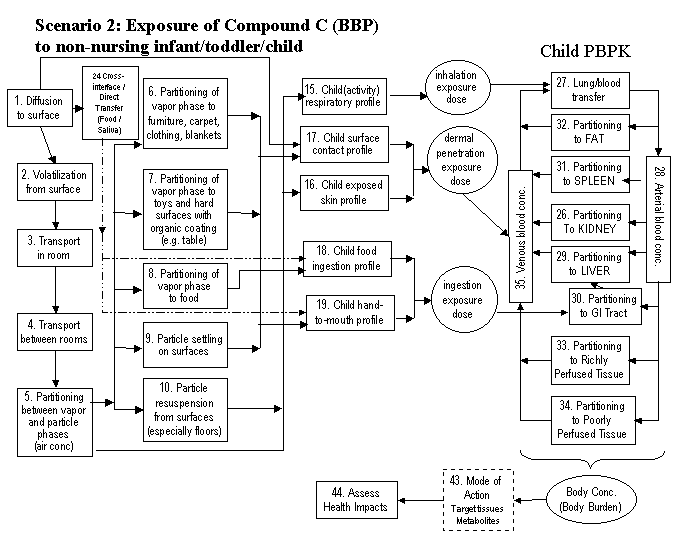
![]() 4.0 Scenarios
4.0 Scenarios
4.1 Life Stages
4.2 Scenario 1
Model Flow Diagram 1
4.3 Scenario 2
Model Flow Diagram 2
4.4 Scenario 3
Model Flow Diagram 3
4.5 Scenario 4
Model Flow Diagram 4
4.6 Process Flow
4.7 Gap Analysis
the mapping between the models and the process numbers.
Select a model or model description from the table below (ordered alphabetically),
and the corresponding processes on the diagram will be highlighted.
| Child BBP Exposure |  |
| CONSEXPO | |
| CONTAMW | |
| Dust resuspension | |
| Partitioning between vapor and particle phase | |
| PBPD for human | |
| PBPK for human | |
| THERdbASE |
Notes
- Compound C: BBP: butyl benzyl phthalate
- Metabolite: Not Known
- Mode of Action: Not Known
- Data gap: No models for #5 partitioning between vapor and particle phase or #10 particle resuspension from surfaces (especially floors)
- Dr. John Little and others at Virginia Tech in Blacksburg, VA have developed diffusion algorithms for VOCs that may be an improvement over existing models for diffusion-controlled release in process #1 and the reversible, diffusive sink effect for processes #6, #7, & #8. Papers describing these algorithms have recently been accepted in the journals "Indoor Air" and " Environmental Science & Technology". Dr. Little's e-mail address is jcl@vt.edu.
Return to Process Framework list.
